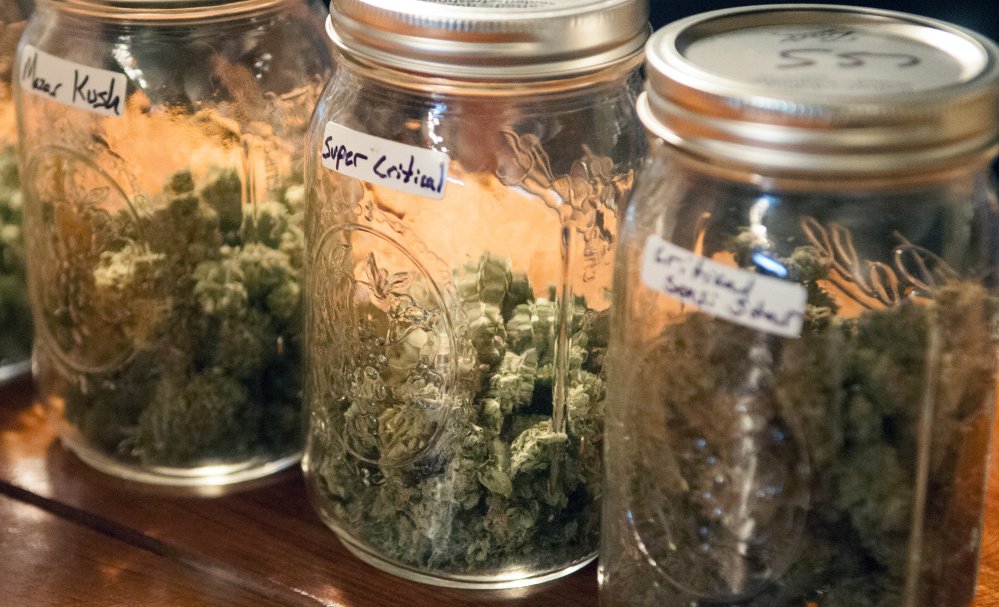The irony of it all is overwhelming.
Gaetan Bourgoin, who had no trouble getting his worker’s compensation insurance to pay for decades’ worth of highly addictive painkillers of dubious value to his chronic pain, has been forced to go into his own pocket for the one treatment he has found to be effective — medical marijuana — in large part because it is not considered medicine under federal law.
Why, when so many people use it effectively as a medicine, is marijuana not considered medicine under federal law? Because there is little to no research on marijuana’s effectiveness for that use. Why is there little to no research? Because it’s not considered medicine under federal law.
Confused yet? You’re not alone — the country’s patchwork of laws, rules and policies on medical marijuana is exhausting and pointless where it should be definitive and beneficial to Americans who want an alternative to the opioids responsible for thousands of deaths.
Bourgoin’s fight is just the latest example of a debate that is happening around the country. Following a injury at Fraser Papers in Madawaska in 1989, Bourgoin sought relief from debilitating back and leg pain. He was prescribed powerful painkillers such as fentanyl, oxycodone and morphine, but they did little to stop his pain, and led to addiction and thoughts of suicide.
Five years ago, though, on the advice of his physician he tried medical marijuana. It worked, but his worker’s compensation insurance company has refused to pay, even though it works where opioids didn’t, and even though marijuana, at about $400 a month, is far cheaper than the opiates, which often cost more than $2,300 a month. His case will be heard by the Maine Judicial Supreme Court in September.
The insurance company argues that because medical marijuana exists in legal limbo, legal in 29 states but still illegal federally, it is not like pharmaceuticals, and paying for it would put them at risk.
They have a point — marijuana is not prescribed like any other drug. Marijuana patients are certified outside of their regular doctor’s office. Unlike prescriptions, which apply to a particular drug and dosage, marijuana patients are allowed to use whatever strains and delivery systems they prefer — dosage and timing are only loosely defined. Because of federal banking laws, dispensaries are cash-only businesses.
And under Attorney General Jeff Sessions, who has hinted at taking on states where medical marijuana is legal, the risk has only grown.
But if it seems like a shadowy industry, the fault lies with the federal government. Because marijuana remains illegal at the federal level, dispensaries and other marijuana-related businesses can’t use the banking system. Because marijuana remains classified as a harmful drug without any “acceptable medical use,” it is difficult for researchers to do the work necessary to show that it does, in fact, have medical uses.
All these barriers for patients seeking a safe and often effective treatment, when there are so few for far more dangerous opioids.
There is little evidence, too, that opioids like OxyContin are effective in treating chronic pain. But dressed up as respectable by pharmaceutical companies, they have been handed out by the billions, precipating the heroin crisis now killing thousands of Americans a year.
Bourgoin may win his court case. People will continue to go to medical marijuana for relief when other treatments don’t work.
But until marijuana is treated as the potentially effective treatment, others will surely, needlessly suffer.
Send questions/comments to the editors.



Success. Please wait for the page to reload. If the page does not reload within 5 seconds, please refresh the page.
Enter your email and password to access comments.
Hi, to comment on stories you must . This profile is in addition to your subscription and website login.
Already have a commenting profile? .
Invalid username/password.
Please check your email to confirm and complete your registration.
Only subscribers are eligible to post comments. Please subscribe or login first for digital access. Here’s why.
Use the form below to reset your password. When you've submitted your account email, we will send an email with a reset code.